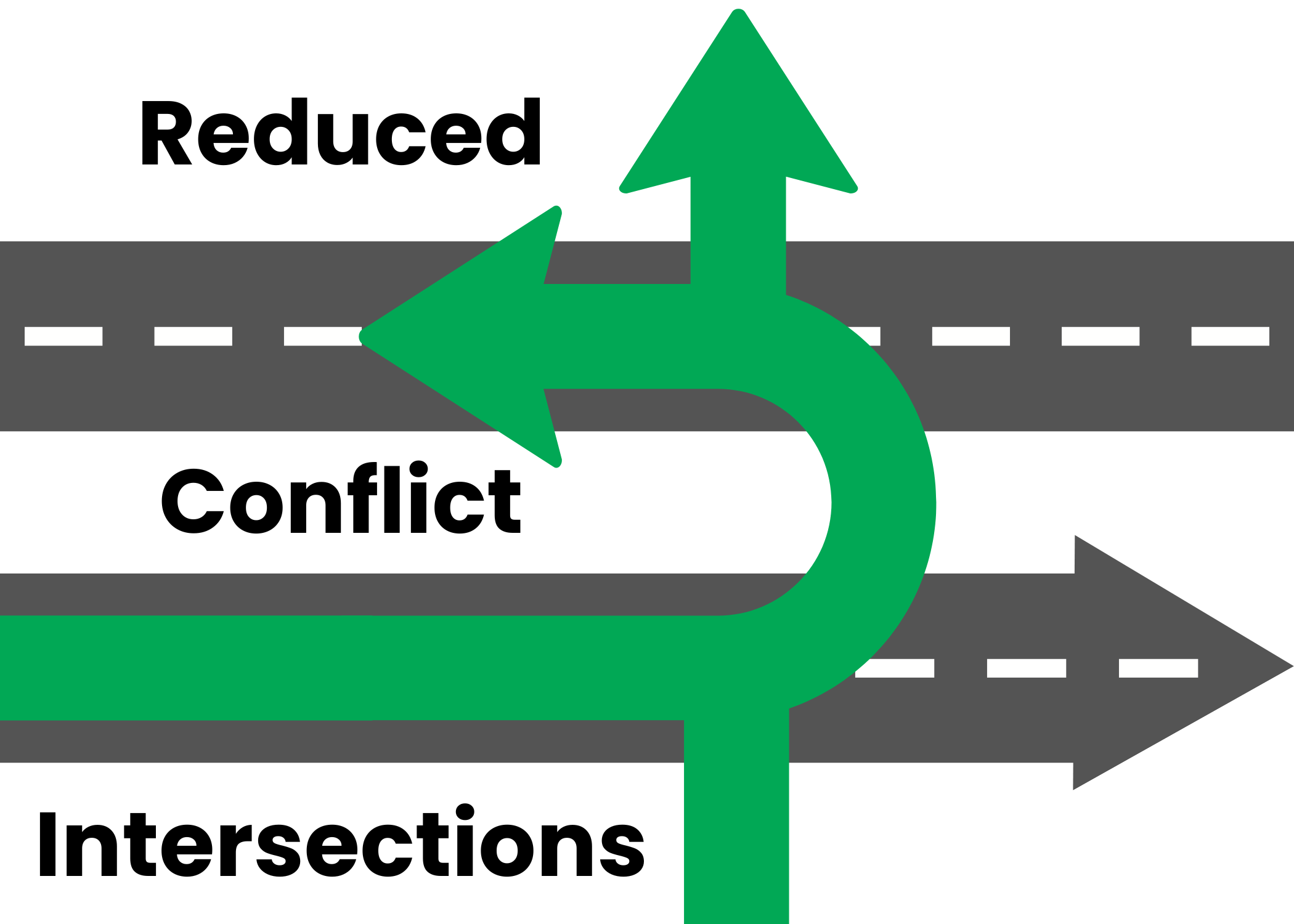Have you ever been stuck at a traffic light on a busy highway, wondering why it takes so long to get through? Traffic signals are important for safety, but sometimes, they can slow things down—especially when lots of cars are trying to go in different directions. That’s where Reduced Conflict Intersections (RCI) come in, a smart and safer option to keep traffic flowing without adding more stoplights.
What is an RCI?
An RCI, or Reduced Conflict Intersection, is a special type of intersection designed to make crossing a busy highway safer and quicker. Instead of drivers trying to cross multiple lanes of traffic all at once, RCIs help separate the movements of vehicles, reducing the chances of a crash.
How Does an RCI Work?
In a regular intersection, a driver coming from a side road would need to cross all lanes of traffic or make a left turn into fast-moving cars, which can be dangerous. But with an RCI, the driver only makes right turns. Here’s how it works:
- Right Turn First: Drivers coming from the side road make a right turn onto the highway.
- U-Turn: After traveling a short distance on the highway, drivers can then make a safe U-turn at a specially designed location.
This setup reduces the number of conflict points—places where cars could potentially crash—making the intersection much safer.
Why is an RCI Safer?
The biggest reason RCIs are safer is that they eliminate left turns across busy lanes of traffic. In fact, studies show that RCIs can reduce severe crashes by up to 70 percent! By controlling how cars enter and leave the highway, drivers have fewer chances to get into dangerous situations.
RCIs also help cut down on the number of traffic signals needed. Fewer stoplights mean less stopping and starting, which can improve traffic flow and reduce delays.
What Are the Benefits of RCIs?
- Fewer Crashes: RCIs are designed to reduce the most dangerous types of crashes, like T-bone accidents, which often happen at traditional intersections.
- Less Waiting: Because RCIs don’t rely on traffic lights, cars keep moving, even during busy times.
- Cost-Effective: Installing an RCI can be cheaper than putting in new traffic signals, and the lower crash rates mean fewer costly accidents.
- Better Traffic Flow: RCIs allow more cars to move through an intersection faster than a typical signalized intersection.
Why Is ALDOT Using RCIs?
ALDOT engineers are always looking for ways to improve safety and traffic flow, especially on busy highways where traditional signals may not be the best option. RCIs offer a smart alternative, providing safer and smoother travel for everyone. As Alabama’s roads get busier, RCIs will play an important role in helping drivers get where they need to go more safely.
In the end, RCIs are just one of the many tools engineers use to make our highways safer. While they may look a little different, their goal is simple: keep traffic moving and reduce crashes.
Examples of Reduced Conflict Intersection (RCI) designs
These help improve safety by minimizing dangerous movements across multiple lanes of traffic:
- Roundabouts:
- A roundabout is an RCI design that eliminates left turns and straight crossings through a busy intersection. Instead, all vehicles enter a circular traffic flow where they yield to vehicles already in the roundabout and exit at the desired point. This reduces the number of potential conflict points and lowers the chance of high-speed collisions.
- R-Cut (Restricted Crossing U-Turn):
- In an R-Cut configuration, drivers on a minor road approaching a busy highway are restricted from directly crossing or making left turns at the intersection. Instead, they must turn right onto the highway and then make a U-turn at a designated point downstream.
- Median U-Turns (MUTs):
- In a median U-turn, drivers are not allowed to make direct left turns at an intersection. Instead, they are directed to go straight or turn right and use a U-turn further down the road to reach their destination. This simplifies the traffic movements at intersections, reducing the likelihood of crashes.
- J-Turns:
- A J-turn is similar to an R-Cut but is used primarily for left turns. Vehicles approaching an intersection that want to turn left must first make a right turn, followed by a U-turn further down the road. This eliminates the need for vehicles to cross several lanes of traffic at once, significantly reducing the chance of collisions.
- Continuous Flow Intersections (CFI):
- In a continuous flow intersection, left-turning vehicles are rerouted to a different lane before they reach the intersection, so they don’t have to cross oncoming traffic. This design allows multiple movements to happen simultaneously, reducing delay and improving safety.




